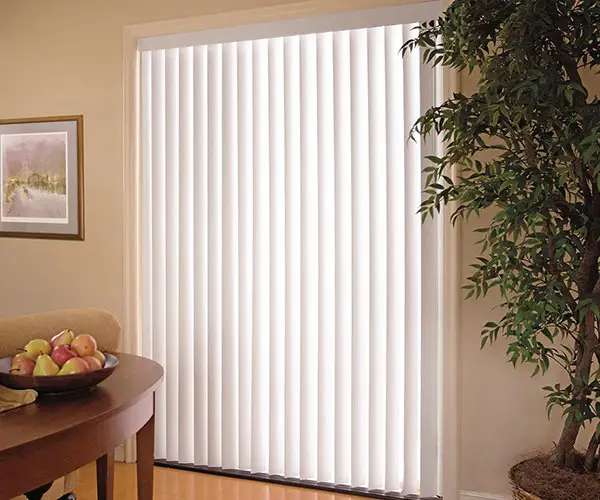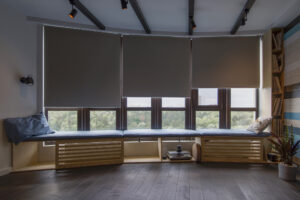Even though energy-saving windows can even cut down on your energy bill, there’s still the task of dressing up your windows and controlling the heat and the cold.
But when it comes to choosing blinds for your home, it’s a little more tricky. You love your windows, but they need protection. What are the best blinds for windows?
If you’re in the market for blinds for your windows, keep reading to find more about vertical and horizontal blinds and which type might work in your home.
Vertical Blinds
There are two types of blinds: horizontal and vertical. Let’s explore vertical blinds first.
Vertical blinds hang from the top of the window to the floor. They’ve very popular when it comes to covering sliding doors the lead to a patio or yard, and vertical blinds look great in a bay window as well.
Vertical blinds work best with larger windows, which is why they’re well-suited for doors. They slide from side to side when you want to open them and can be very sturdy. Vertical blinds lay staggered on top of each other to keep out light, cold, or heat.
Because they’re staggered, they don’t completely block the light, rather, they will let a small amount of light filter in.
Vertical blinds come in narrow or wider sizes. The best size would be to tailor it to your type of door, room, and how much light you want to allow.
Horizontal Blinds
While vertical blinds do a wonderful job maintaining the privacy of larger windows and sliding doors, horizontal blinds work best with smaller and more narrow windows.
Horizontal blinds are the opposite of vertical; they run side to side and will cover the entire window. To open them, you use a pull string or other mechanical device depending on the type of blinds you have. Opening them will pull the blinds up, allowing full use of the window.
Horizontal blinds also lay on top of each other and do a great job with privacy and letting in a little light as well, even more so with privacy. With horizontal windows, they can be closed tightly, allowing no one to peek into your home.
How To Choose Blinds
Choosing blinds is a personal preference, but there’s a basic rule of thumb.
Overall, horizontal blinds are better for smaller, narrow windows and vertical for larger windows.
Here are some other tips to consider.
1. Opening the Blinds
When you’re choosing blinds, think about how you want to operate them. For some people, pulling the string of horizontal blinds is too complicated, or for those with children, they’re afraid of the danger of a child getting tangled in the string.
Find what suits you and the window type before you make your decision.
2. Cleaning
Most people don’t consider cleaning their blinds until they become coated with dust or dirt. But cleaning your blinds regularly can prolong their life.
Cleaning your horizontal blinds may be a little more challenging due to cords. Cleaning vertical blinds requires dusting and wiping them down, which is easier than the horizontal blinds.
3. Types of Blinds
With both horizontal and vertical blinds, there are different types. You can get them in various fabrics, shapes, sizes, colors, and materials. They can be wooden, vinyl, faux wood, aluminum, and more. There are hundreds of different options to choose from and one that will probably fit your needs.
4. Fading
While most blinds do a great job at blocking UV rays and keeping your energy costs down, it’s important to remember that they may fade depending on the type of blinds you have.
Wooden blinds are mostly prone to fading and even swelling if the humidity is high. The faux-wooden blinds are more resistant to fading and are still very sturdy.
5. Theme
Your home likely has home decor that revolves around a theme or color scheme. When you think about adding in blinds, be sure that the blinds you choose to match or blend with the current decor of your home.
6. Slat Size
The slats are the size of the blinds themselves. Slats come in many different sizes, ranging from 25mm-50mm. Horizontal blinds don’t touch the floor, but if your vertical blinds do, you’ll have to consider the size of your slats.
How Much Do Blinds Cost?
The cost of your blinds is going to vary greatly depending on the type of blinds you get, what kind of materials you need, and how large they are.
While you can buy blinds for as little as $10 apiece, remember that they may not hold up. Blinds that will last for many years will cost much more, but they will be worth it. You can get blinds that are well-crafted for around $80-100 a piece.
Truly custom blinds will cost more because they will need to fit a custom window size instead of a standard one.
The Best Blinds For Windows
When it comes to finding the best blinds for windows, the easy answer is the ones that work for you! When you consider the size of the window, your needs, and types of materials the blinds are made, you can make a decision that works best for your home!
Are you interested in purchasing blinds for your home? Our company has a five-star rating and over 20 years of experience, so we can answer any questions you may have. Contact us today and talk to an expert to get a free quote!






